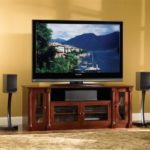Projection TV Features
Which device is best for home theater? Experts will unanimously call a projection TV. However, it is not familiar to every user. On what principle such a technique works, and what kinds of it are represented on the modern market, will tell this review.
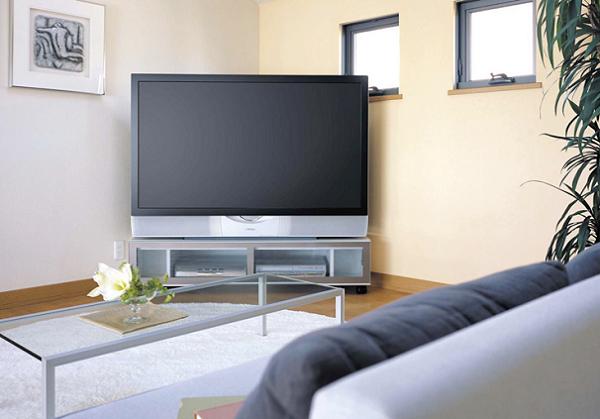
Content
Pros and cons of such equipment
Projection tv is a device capable of reproducing a small-scale image on a large display. Its main difference will be the original very high brightness. By viewing the picture will be ready after its projection on a special translucent screen.
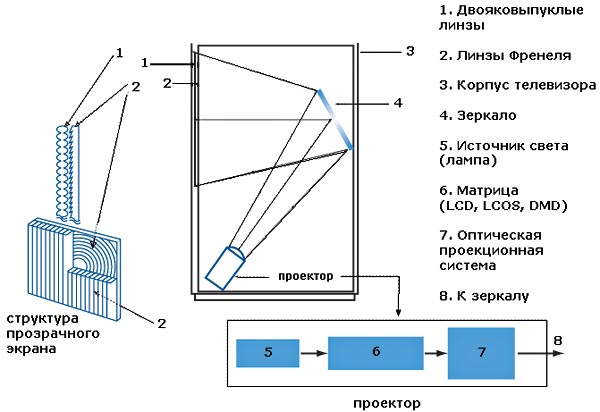
The biggest advantage of the device is its scalability. Indeed, in his case it is much easier to enlarge the translucent screen than to do the same with plasma or LCD option. The powerful backlight in the projection TV system allows it to receive bright and sharp picture, and the resolution becomes high-precision.
And the price of such a TV, suppose, the size of 42 inches, is much less than that of its plasma or liquid crystal counterpart.
Now about the benefits of operation. In the "plasma" for several years of operation, the panel worth at least two thousand dollars will burn out, and in the LCD model the same will happen with the backlight (the price is also about a thousand dollars). In a projection lamp, the lamps change more often, but their cost is also less — about two hundred dollars. You can make a replacement on their own at home, but in the LCD panel the backlight can be changed only by qualified specialists (the plasma panel cannot be restored).
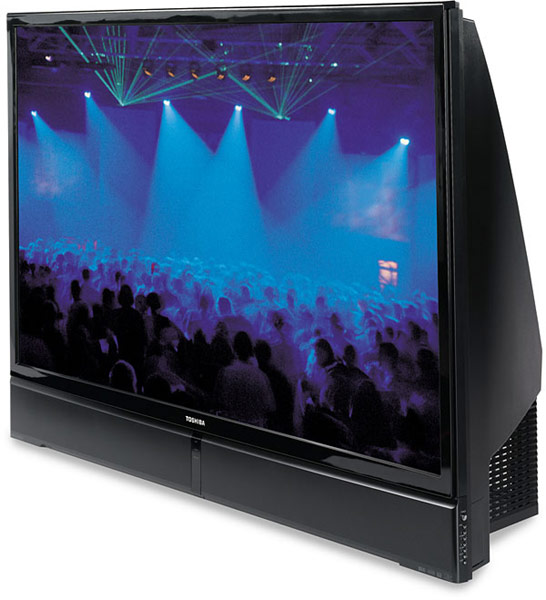
Not without flaws.
- The thickness of the device.
- The lamps do not have a long service life - approximately within 10,000 hours (and power drops reduce it even more).
- Noise during operation (caused by special cooling of such lamps).
Projection tv design
Already in the very name of such a device the principle of image formation is reflected. There are devices with frontal and back projection (it should be noted that the release of the last discontinued since 2014). The picture will begin to “emerge” in the source of small size with the help of CRT or LCD display. Further, through the system of optical lenses, it is transmitted to the screen.
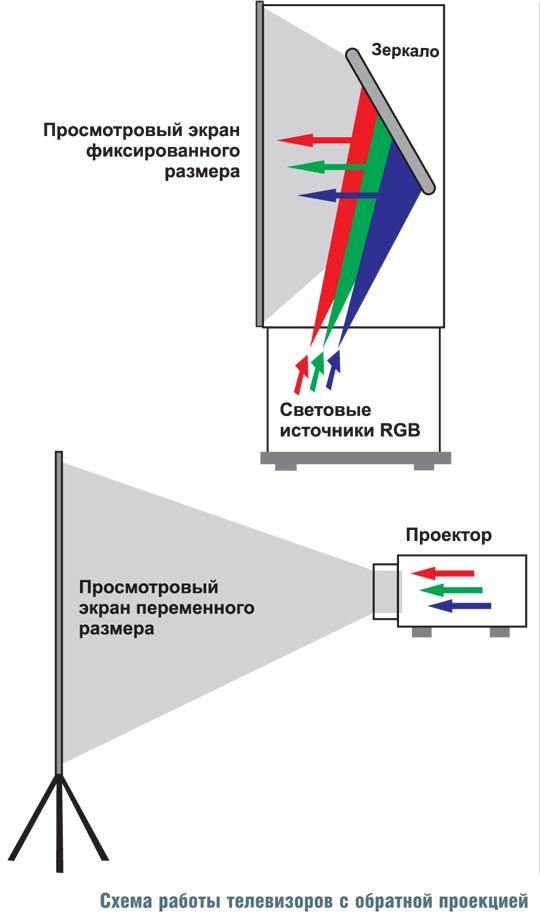
The device includes the following parts:
- projector;
- control panel;
- screen;
- sound reproduction system.
There is a difference in where such a device will be used - its configuration depends on it.
- If you plan to use the device at home, then you will be offered a device in which all parts will be located in one case. This technique is usually impressive in size.
- But for conference rooms, the system usually includes a screen and the projector and control system behind it.
- There are designs in which the screen and the projector are installed in different parts of the room. Control in this case can be carried out by a speaker sitting at a laptop.
Type of imaging
In devices of this kind there are three types of picture formation. They divide the televisions themselves into such groups:
- CRT (CRT);
- liquid crystal (LCD);
- on micromirrors (DLP);
- D-ILA (combination of LCD and DLP).
CRT
In the first version, at least three kinescopes with basic colors - each will form a picture in its own color range. It is possible to note the high quality, but there is such a technique and significant shortcomings –when the still images burn out areas, it has considerable weight and dimensions.
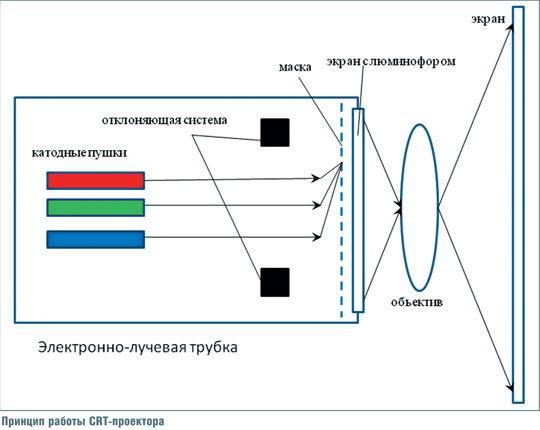
LCD
LCD projection TV produces an even higher quality picture (before screen projection, light passes through the liquid crystal matrix - from one to three). The big drawback is the likelihood of pixel structure. One of the most recent developments is LCoS - liquid crystals on silicon, which use a special matrix. This makes the image incredibly realistic.
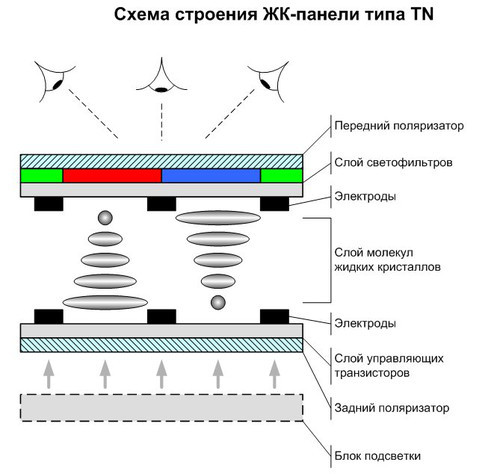
DLP
The most modern recognized DLP-system. It is a chip in which millions of micromirrors are hidden. The number of chips varies from one to three. Needless to say that the screen displays a bright, high-quality and contrasting picture with high color reproduction and clarity.
But even in the most successful projection developments there are some flaws. This is the so-called rainbow effect which manifests itself in short-term flashes of green, red and blue flashes.Often this happens when a bright object moves quickly on a dark background, or when the viewer's eyes slide across the screen.
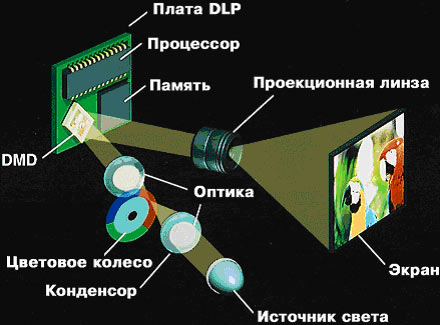
D-ILA
There is another type of image formation called Direct Drive Image Light Amplifier, which combines the capabilities of DLP and LCD technologies. The development belongs to the Japanese company JVC. Here, the basis is the same LCD matrix, as in the LCD-models, but the work here goes on reflection (similar to the DLP). Technologically, it looks like this: the picture is formed by adding the light fluxes coming from the three matrices of the device. The main feature of such an idea is softness in color gradations and smoothed pixels (actual for larger screen devices).
Recently, these projectionists have lost their popularity, but now we can note a significant revenge on this technique. It is promising in relation to its “talents” and prices. Users value these appliances for short response time and the absence of many problems that are inherent in plasma and liquid crystal analogues.
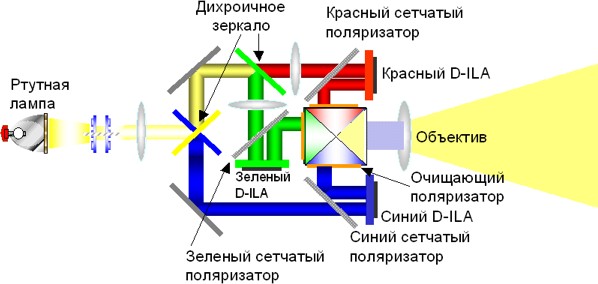
Review of projection TV models
Model LG PF-44SZ40 just represents micromirror device. TV itself has a diagonal of 38 inches with a working frequency of 130 Hz (what effect this parameter can be found in the article on choosing a screen refresh rate). Excellent color and sound (included are two speakers). However, despite numerous positive reviews, it’s unrealistic to find such an option in stores.
Samsung SP-70L7 received positive marks for excellent color rendering. This model has a large pixel space. Of the other technical features - the use of the LCD matrix. A clarity of the picture gives the use of an oil film. By the way, the model is quite possible connect headphones. You can buy such a pleasure for about 50,000 rubles.
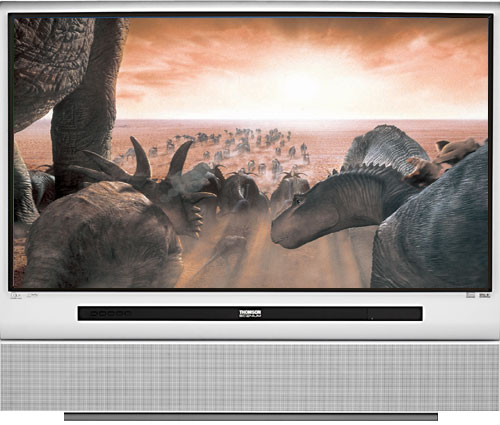
TV Thomson 50DLY644
One of the most modern models is Thomson 50DLY644 - besides the large screen, the viewer will enjoy using microscopic mirrors. Televisions rarely have problems with grain, and if the picture seems very bright, you can simply reconfigure it.
For installation, it is better to call a specialist (after all, a weight of at least 34 kg). The price is less than the previous option - you can purchase equipment for 40,000 rubles.
Another option with a good optical system is embodied in the Toshiba 43D8UXR.Many users praise him for wide screen, noting that watching movies on such a device is a pleasure. For a good graphics and color reproduction is responsible for a special matrix. Despite the absence of an oil film on a kinescope, which usually gives clarity, the detail of the scenes turns out to be amazing without exaggeration. The price is slightly higher than the already considered proposals - in this case it will be 60,000 rubles.
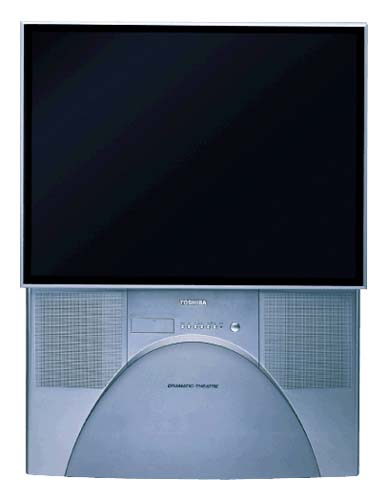
TV Toshiba 43D8UXR
Constantly growing consumer demand for high-resolution televisions makes it possible to revive the popularity of projectors and a breakthrough in the domestic market. "Voting" wallet, the future user will certainly choose the best option for high-quality images at the rate of ruble-inch. And, perhaps, it will be exactly the projection model. If you have already decided to use projection TV in arranging your home theater, then it would be good to know how to arrange all the components.

/rating_on.png)
/rating_off.png)






